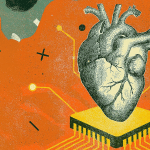Organ-on-a-chip tech is (almost) ready to replace animal models

Source: interestingengineering
Author: Georgina Jedikovska
Published: 7/3/2025
To read the full content, please visit the original article.
Read original articleOrgan-on-a-chip (OoC) technology is emerging as a promising alternative to traditional animal models in drug testing and biomedical research. These microfluidic devices, engineered with human cells, replicate the structure and function of human organs on a miniature scale, allowing precise simulation of biological processes such as blood flow, cellular communication, and mechanical stresses. Unlike animal models, which often fail to accurately predict human responses—evidenced by nearly 90% of drug candidates failing in human trials despite success in animals—OoC systems offer more relevant human-specific insights. By incorporating cells from diverse donors, these chips can reflect variations in age, sex, and genetics, enabling personalized and predictive assessments of drug efficacy and disease mechanisms.
The construction of organ-on-a-chip devices involves materials like polydimethylsiloxane (PDMS), thermoplastics, hydrogels, and glass, each chosen for specific properties such as flexibility, biocompatibility, and transparency. PDMS is currently favored due to
Tags
materialsmicrofluidicsorgan-on-a-chipbiomedical-engineeringdrug-testinghuman-cell-modelslab-on-a-chip